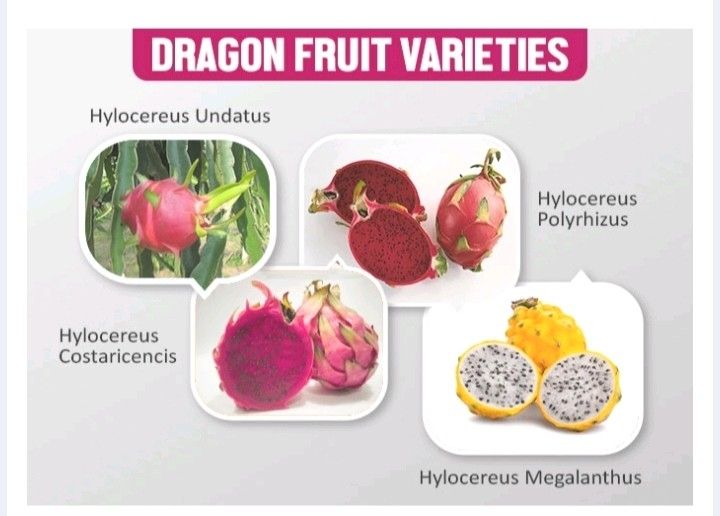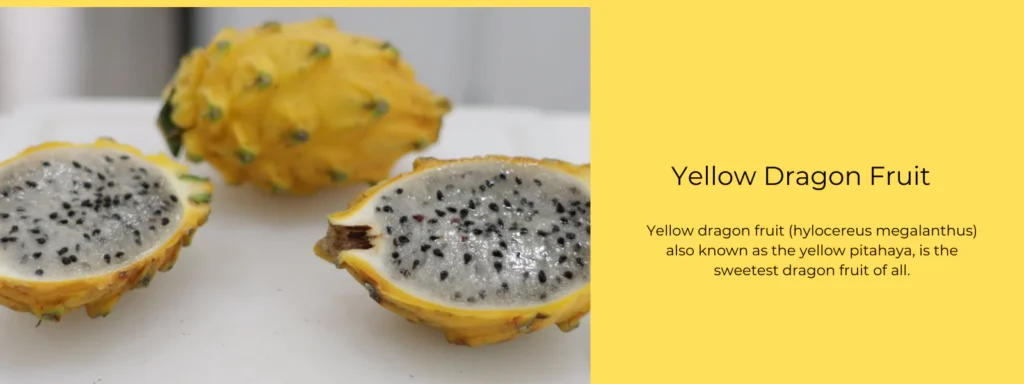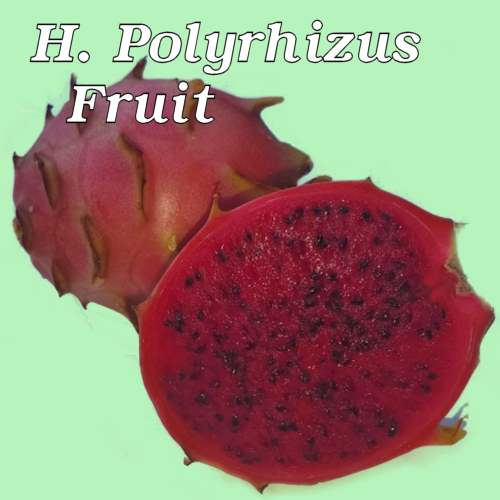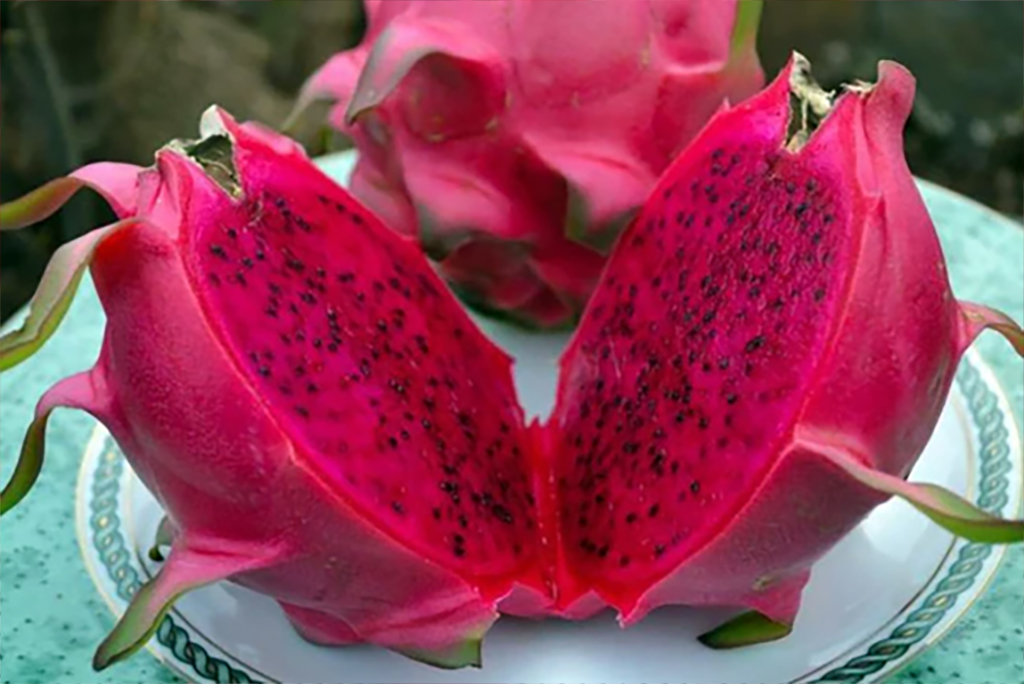megalanthus & polyrhizus, Hylocereus megalanthus, commonly known as Yellow Dragon Fruit, Yellow Pitaya, or Pitaya Amarilla, is a variety of dragon fruit with distinct characteristics.Hylocereus polyrhizus is commonly known as Red Dragon Fruit or Vietnamese Dragon Fruit.
megalanthus & polyrhizus:

Hylocereus megalanthus:
Here are some details about Hylocereus megalanthus:

Exterior:
The skin of Hylocereus megalanthus is typically yellow and may have greenish scales. The exterior can be smooth or slightly bumpy, depending on the specific cultivar.
Flesh:
The flesh of Yellow Dragon Fruit is white, similar to Hylocereus undatus. It contains numerous small, black seeds distributed throughout the flesh.
Flavor:
The flavor of the yellow-fleshed dragon fruit is sweet and mildly tangy. It is often described as having a tropical and refreshing taste. The sweetness level may vary based on factors such as ripeness.
Texture:
The texture of the flesh is juicy, and it has a mildly crunchy texture due to the presence of seeds. It is comparable to the texture of kiwi fruit.
Nutritional Content:
Yellow dragon fruit shares nutritional similarities with other dragon fruit varieties. It is a good source of vitamin C, B vitamins, fiber, antioxidants, and minerals.
Growing Conditions:
Like other dragon fruit varieties, Hylocereus megalanthus is a tropical and subtropical cactus. It thrives in warm climates and requires well-draining soil. The plant produces large, night-blooming flowers that develop into the distinctive yellow-fleshed dragon fruit.
Cultivation:
Yellow dragon fruit is cultivated in regions with suitable climates, and commercial cultivation has expanded globally. It can be grown in both tropical and subtropical areas.
Versatility:
Yellow dragon fruit is versatile in its usage. It can be enjoyed fresh on its own, added to fruit salads, used in smoothies, or incorporated into desserts. Some people also use it in savory dishes or as a colorful garnish.
Yellow dragon fruit stands out for its vibrant color and unique taste, providing a refreshing and tropical flavor experience. It is a favorite among consumers who appreciate its visual appeal and enjoy the sweet and tangy taste of this dragon fruit variety.

Hylocereus polyrhizus
Hylocereus polyrhizus is commonly known as Red Dragon Fruit or Vietnamese Dragon Fruit. Here are some details about this particular dragon fruit variety:
Exterior:
The skin of Hylocereus polyrhizus is typically red, and it may have green scales. The outer appearance can vary, but the overall effect is a vibrant red color.
Flesh:
The flesh of this variety is usually red or pink, depending on the specific cultivar. Similar to other dragon fruit varieties, it contains small, edible black seeds distributed throughout the flesh.
Flavor:
The flavor of the red-fleshed dragon fruit is sweet with a hint of acidity. It has a tropical and refreshing taste, making it a popular choice for consumption.
Texture:
The texture of the flesh is juicy, and it can be compared to that of kiwi. The seeds add a bit of crunchiness to the overall texture.
Nutritional Content:
Red dragon fruit is rich in nutrients, including vitamin C, B vitamins, fiber, antioxidants, and minerals. It shares nutritional benefits with other dragon fruit varieties.
Growing Conditions:
Hylocereus polyrhizus, like other dragon fruit varieties, is a tropical and subtropical cactus. It thrives in warm climates and requires well-draining soil. The plant produces large, night-blooming flowers that develop into the distinctive red-fleshed dragon fruit.
Cultivation:
Red dragon fruit is cultivated in various regions with suitable climates. Commercial cultivation has expanded globally due to the increasing popularity of dragon fruit. It can be grown in both tropical and subtropical areas.
Versatility:
Red dragon fruit is versatile and can be enjoyed on its own, added to fruit salads, used in smoothies, or incorporated into desserts. Some people also use it in culinary dishes for both its flavor and vibrant color.
This variety is often referred to as “Vietnamese Dragon Fruit” due to its popularity and cultivation in Vietnam. It is appreciated not only for its taste but also for its visual appeal, making it a sought-after fruit in many parts of the world.
this explanation has continued the last post to see other types of dragonfruit click here
